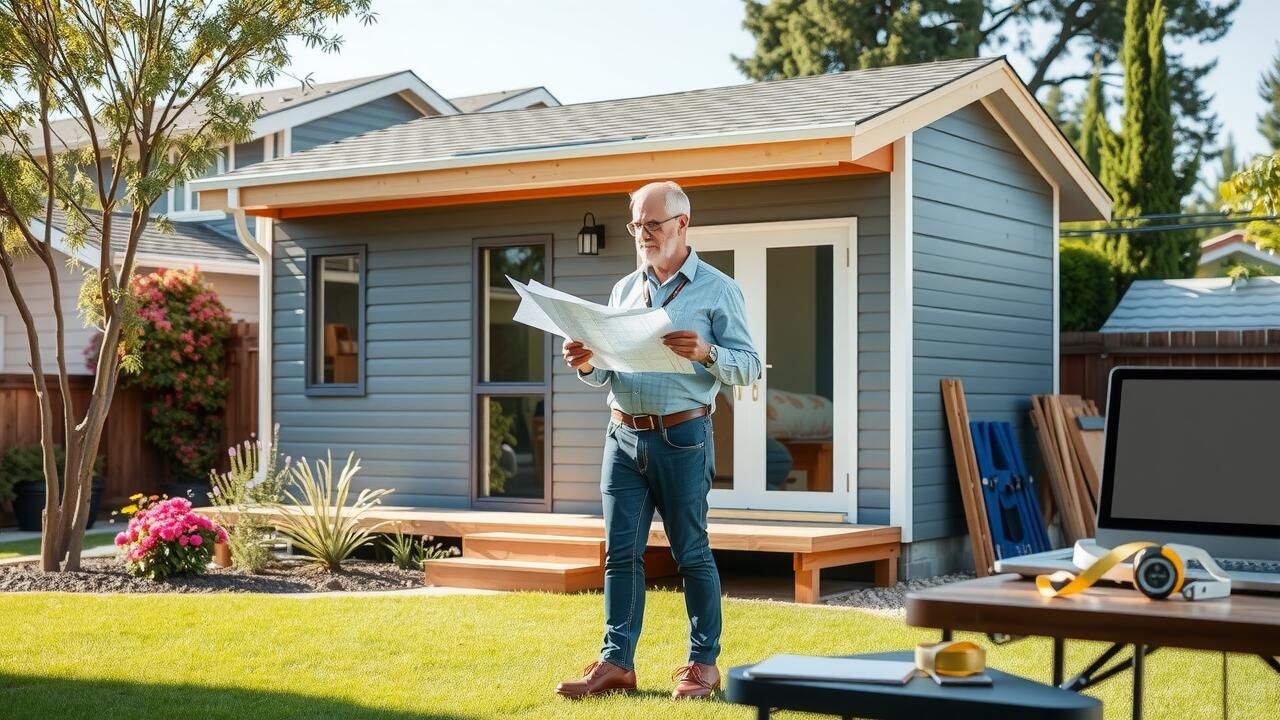
Table Of Contents
Long-Term Value of ADUs
Accessory Dwelling Units (ADUs) have gained popularity for their potential to enhance property value over time. Homeowners investing in an ADU in Pardee, Santa Clarita, can often expect a favorable return, especially as housing demands increase in urban areas. These units not only offer an additional living space but can also be a significant asset for future resale. The multifaceted use of ADUs, including housing elderly family members or providing a space for guests, adds to their overall appeal and value proposition.
An ADU provides homeowners with opportunities for rental income, further improving long-term financial outcomes. If a homeowner decides to rent out the unit, they can generate consistent cash flow that helps cover mortgage costs or other expenses. The demand for rentals in desirable neighborhoods like Pardee, Santa Clarita, is on the rise, which could enhance the allure of investing in an ADU. Additionally, when the time comes to sell the property, potential buyers may be more attracted to homes featuring income-generating capabilities.
Rental Income Potential and Resale Value
Investing in an ADU in Waltz, Santa Clarita, can provide a significant opportunity for rental income. Homeowners can lease the unit to long-term tenants or list it on platforms like Airbnb for short-term rentals. This additional cash flow can help offset mortgage payments, property taxes, and maintenance costs. The desirability of rental properties in the area often translates into steady demand, making this a financially appealing option for homeowners looking to diversify their income streams.
When considering resale value, an ADU can enhance a property’s overall worth. Many buyers see the appeal of an extra unit that can generate income or accommodate family members. In competitive markets, such features can make homes with ADUs stand out, potentially leading to quicker sales and higher offers. Homeowners in Waltz, Santa Clarita, may find that the investment in an ADU not only improves their current living situation but also proves beneficial when it comes time to sell.
Long-Term Value of Home Additions
Home additions often enhance a property’s overall value, providing additional square footage to accommodate growing families or increasing the livable space for various needs. As lifestyle requirements change, homeowners may find themselves drawn to this option for its versatility. These expansions can lead to improved functionality within the home and offer an opportunity for personalization, making the house more valuable in the eyes of potential future buyers.
In comparison to alternatives like an ADU in Humphreys, Santa Clarita, which typically serves a specific purpose, home additions allow for broader customization. They serve as seamless extensions of the existing structure, making them appealing to those who prioritize continuity in design and function. Their impact on the home’s equity can be significant, especially in markets where space is at a premium, as they often allow homeowners to leverage their investment effectively.
Impact on Home Equity and Space Utilization
Home additions often enhance the overall equity of a property. Expanding living space can make a home more appealing to potential buyers, thereby increasing its market value. A well-planned addition may cater to growing families or individuals seeking larger homes. Additionally, it can provide valuable space that adds functionality. This type of expansion typically allows homeowners to customize their living areas, catering to personal tastes and needs.
In contrast, constructing an ADU in Bouquet Junction, Santa Clarita, offers a different set of benefits. While it might not increase the primary dwelling’s size, it can create a separate living space that serves various purposes, such as a rental unit, guest house, or private office. This flexibility often translates to improved space utilization. Homeowners can benefit from additional income if they choose to rent out the unit, while also enhancing the property’s attractiveness to buyers seeking versatility.
Zoning and Permitting Considerations
Navigating zoning and permitting requirements can be a complex process when considering either an accessory dwelling unit (ADU) or a home addition. Local regulations vary significantly, affecting everything from the size of the structure to its intended use. In areas like Waltz, Santa Clarita, specific guidelines govern the design, placement, and occupation of ADUs. Homeowners must ensure compliance with these rules to avoid costly fines, delays, or project rejections.
Permitting procedures often involve multiple steps, including submitting plans for review and obtaining approvals from local authorities. Home additions may have different stipulations compared to ADUs, potentially requiring more extensive permits due to their impact on the primary structure. Understanding these nuances is crucial for homeowners looking to increase property value or create additional space while remaining within legal boundaries.
Regulations Affecting ADU and Addition Projects
When planning to build an ADU in Pardee, Santa Clarita, it’s essential to navigate local zoning regulations and permitting processes. Various jurisdictions impose specific requirements regarding lot size, design, and occupancy limits. These rules often dictate how many dwellings can exist on a property and may even include guidelines for the architectural style, ensuring that the new construction harmonizes with the existing neighborhood. Homeowners should consult with local planning offices to understand these regulations thoroughly before proceeding.
Similarly, adding an addition to an existing home also involves adherence to zoning laws, which can vary significantly from one area to another. Homeowners must consider setback requirements, height restrictions, and occupancy classifications. Permitting processes might be slightly less stringent for additions, but obtaining the necessary approvals remains a crucial step. Both projects can enhance property value, yet understanding the regulatory landscape is vital to avoid costly delays or modifications later on.
FAQS
What is an ADU?
An ADU, or Accessory Dwelling Unit, is a small, secondary housing unit built on the same lot as a primary residence. It can be a detached structure, a basement apartment, or an addition to the main home.
How can an ADU generate rental income?
An ADU can be rented out to tenants, providing a source of additional income for homeowners. This rental income can help offset the costs of construction, maintenance, and property taxes.
What factors should I consider when deciding between an ADU and a home addition?
Consider your budget, space needs, local zoning laws, potential rental income, and how each option may affect your home’s resale value. Each choice has distinct advantages based on your specific circumstances.
Are there zoning regulations that affect the construction of ADUs?
Yes, zoning regulations vary by location and can impact whether you can build an ADU, how large it can be, and what types of designs are permitted. Always check with your local zoning office for specific requirements.
Which option typically offers better long-term value, an ADU or a home addition?
An ADU often offers better long-term value due to its rental income potential and ability to enhance property resale value. However, the best choice depends on individual needs and local market conditions.


